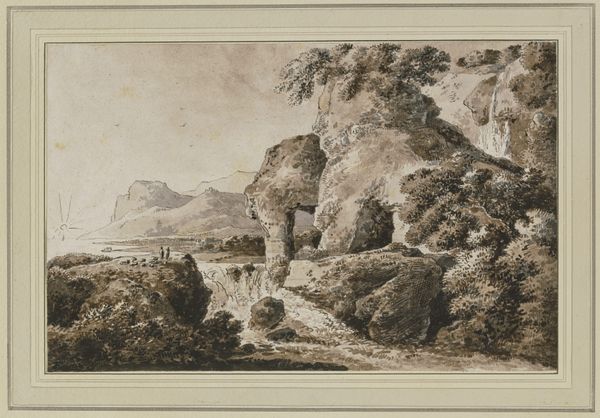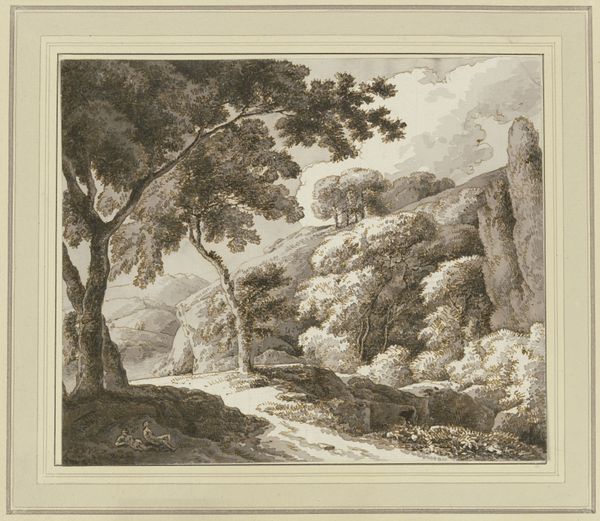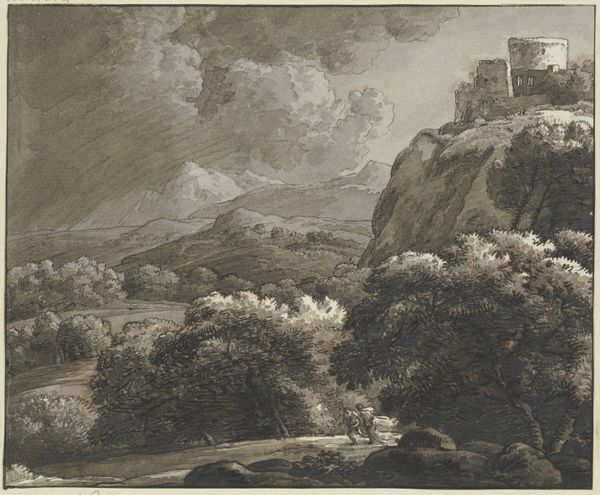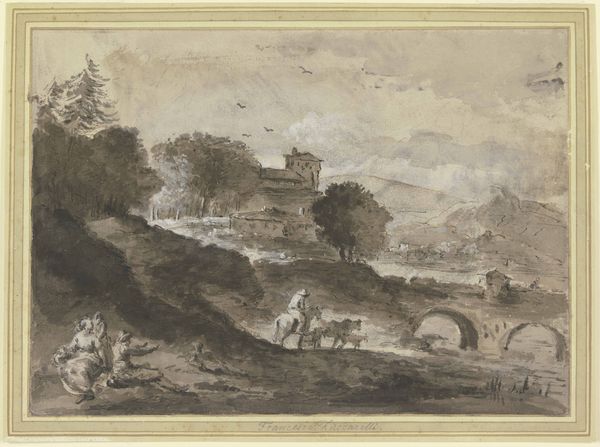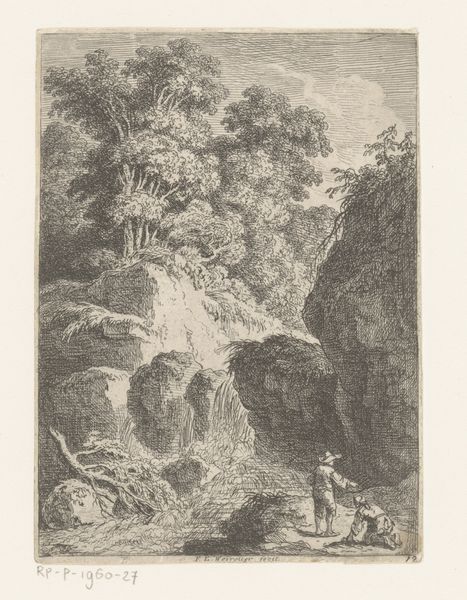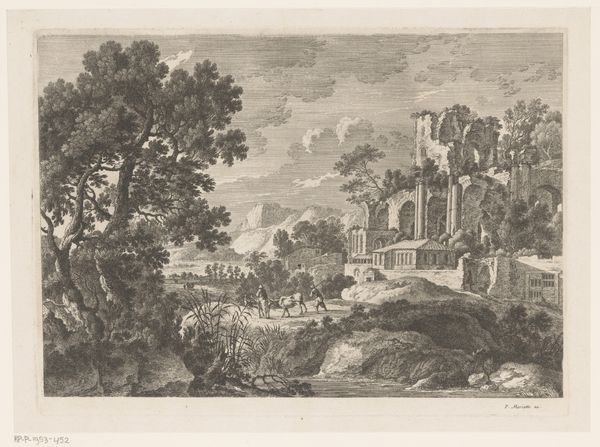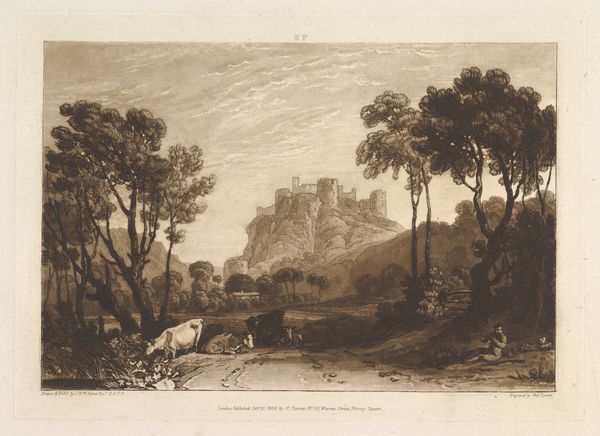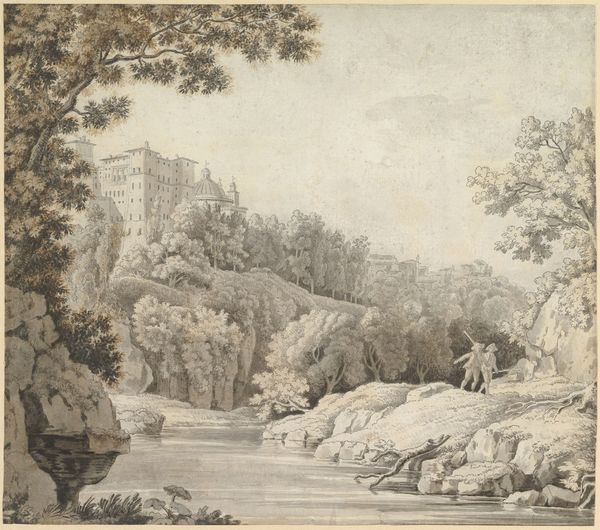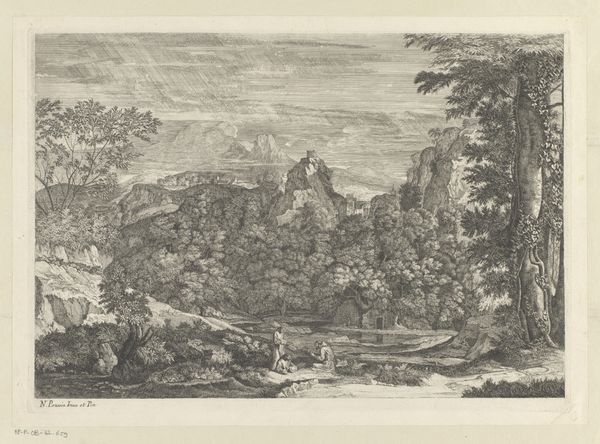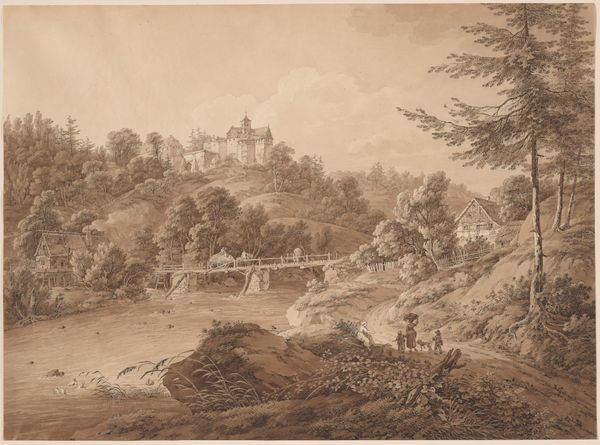
drawing, watercolor, ink
#
drawing
#
neoclassicism
#
landscape
#
charcoal drawing
#
watercolor
#
ink
#
romanticism
#
15_18th-century
#
watercolor
Copyright: Public Domain
Editor: Here we have "Zwei Wanderer in bergiger Landschaft," or "Two Wanderers in a Mountainous Landscape," attributed to Franz Kobell. It seems to be an ink, watercolor, and charcoal drawing. The scene has such a delicate and serene feel to it. What do you make of this landscape? Curator: The work invites us to consider how landscape imagery functioned in the late 18th century. This picturesque scene, rendered with such detail, reveals the growing importance of nature and its relationship to cultural identity and emerging national consciousness. How might this image be related to the changing social roles attributed to both artists and their patrons at this time? Editor: That's interesting. It feels like the landscape almost becomes a stage. The architecture on the hilltop looks like it's posing! Curator: Precisely. Consider the context in which Kobell was working. Landscape drawings became popular with wealthy landowners who used them to demonstrate the cultural and historical significance of their estates. This informed a particular vision of the land. Do you think that this work served the same social functions as a painting during this time? Editor: Well, drawings are typically more intimate. It almost feels like this was a study for something grander. But even as a study, it's presenting a specific vision. Curator: And how does the depiction of these wanderers, these minute figures, serve this vision? Consider also the relationship of landscape art with the emergence of Romanticism. The Städel Museum attributes the piece to both Neoclassicism and Romanticism. Can a single artwork truly embody the traits of different artistic trends at once? Editor: So, by looking at the history and social functions of art, we can start to appreciate the multiple roles that landscape art played in the 18th century. Thank you, that's definitely given me a lot to think about! Curator: And by contemplating the historical agency, the intentions behind an artist's choice of subject, scale, composition, and media, you’re deepening our understanding of both the artist and his patrons. A productive analysis, indeed.
Comments
No comments
Be the first to comment and join the conversation on the ultimate creative platform.
